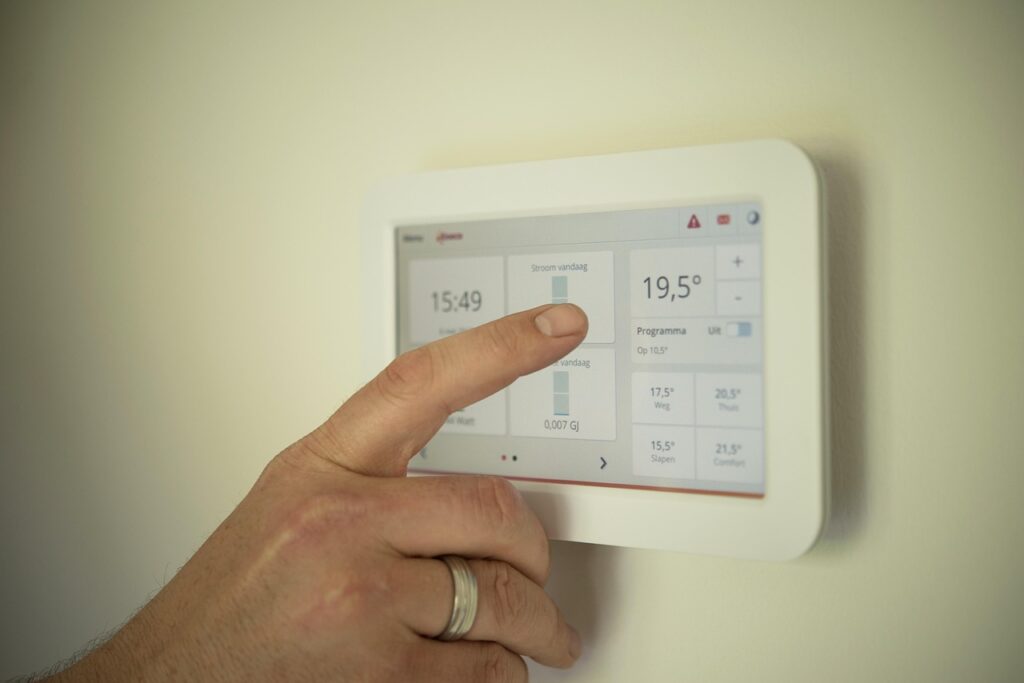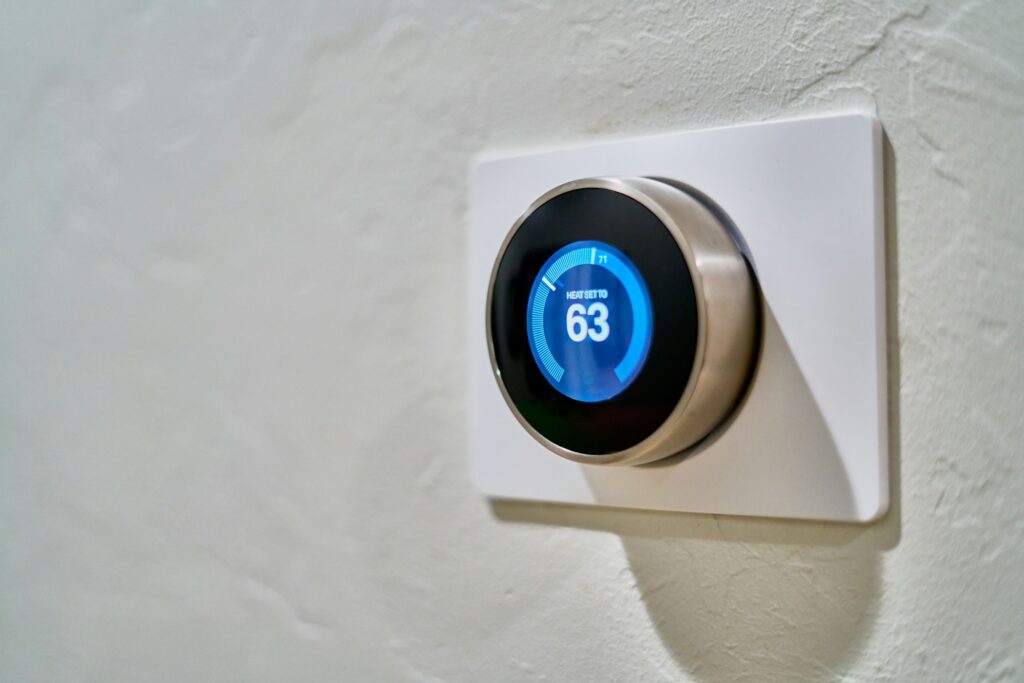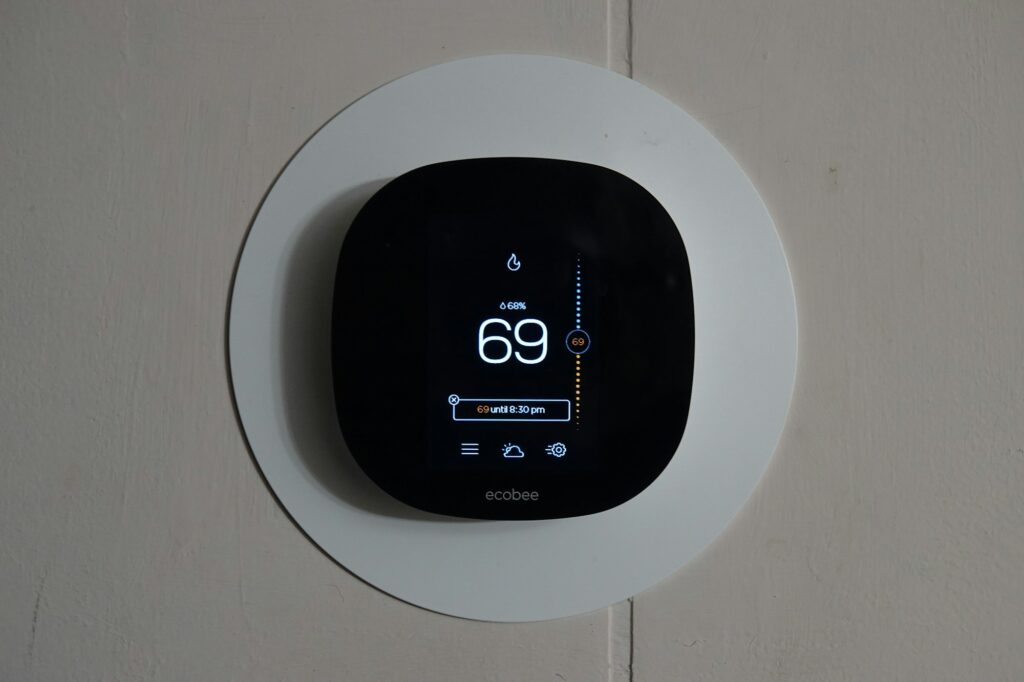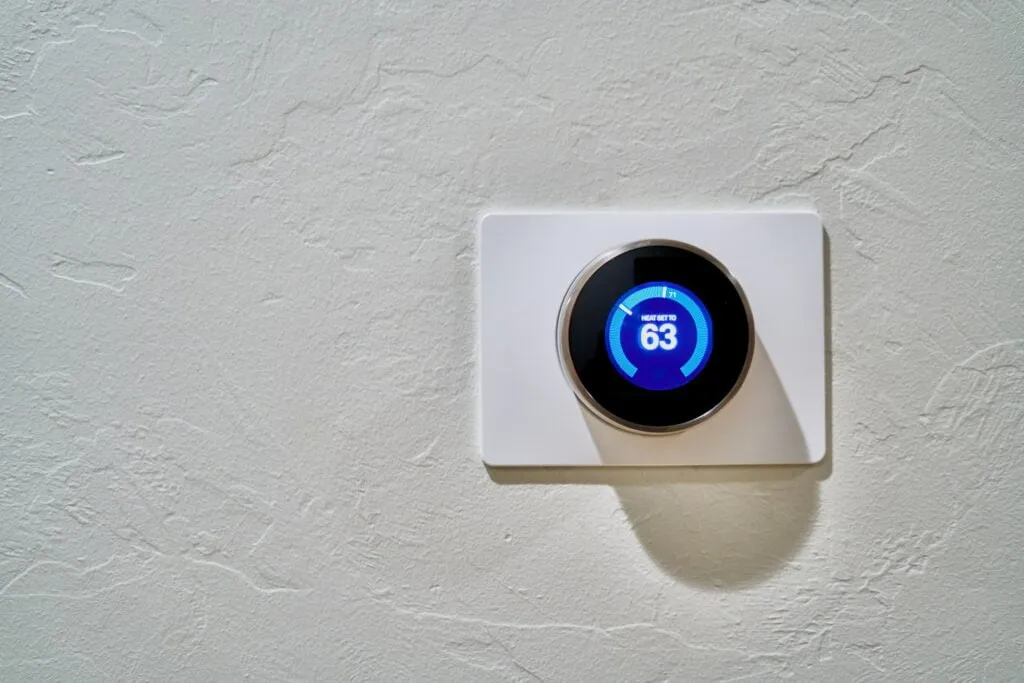Smart thermostats have quickly become “nice-to-have” gadgets and must-have tools for energy-conscious homeowners. If you want to save on your heating and cooling bills, gain more control over your home’s comfort, and maybe even reduce your carbon footprint, a smart thermostat might be your new best friend.
But what exactly is a smart thermostat, and how can they save you money? Let’s explore the details.

What Is a Smart Thermostat?
In simple terms, a smart thermostat is a device that connects to your Wi-Fi and allows you to control your home’s temperature remotely—from your phone, tablet, or smart speaker. But it’s more than just a fancy remote control.
Most smart thermostats learn your preferences and daily routines over time. That means they can automatically adjust your home’s heating and cooling after a few days or weeks of use. For example, if you usually lower the heat at night or turn the AC down at work, a smart thermostat will eventually start doing that for you—no programming required.
Some models also come with extras like:
- Geofencing: Your thermostat uses your phone’s location to know when you’re heading home and can adjust the temperature so it’s comfortable when you walk in.
- Room sensors: Some thermostats come with or support additional sensors to monitor temperatures in different rooms, not just where the thermostat is located.
- Voice control: You can change the temperature with a simple voice command using Alexa, Google Assistant, or Siri.
- Energy usage tracking: You’ll receive monthly or even weekly reports that show how much energy you’re using and offer tips for cutting back.

Why Switch to a Smart Thermostat?
Let’s break down some of the most significant benefits of switching to a smart thermostat:
1. You’ll Save Energy (and Money)
Heating and cooling account for a large chunk of your energy bill—often as much as 40% of your total usage. A smart thermostat helps cut that down by only running your system when needed.
According to some studies, users can save up to 20% annually on their heating and cooling bills by upgrading their thermostats. If you spend $2,000 a year on energy, you could save around $400 by upgrading your thermostat.
The best part? Once it’s set up, most of those savings happen automatically, so there’s no need to tweak the settings constantly.
2. Control Your Home From Anywhere
Ever leave for vacation and realize you forgot to turn down the heat? With a smart thermostat, that’s no problem. You can open the app and adjust the temperature from wherever you are—the beach or the grocery store.
This remote control feature also comes in handy if your schedule changes often. Heading home early? You can warm (or cool) your house on the drive back. Staying out late? Delay that AC cycle so you’re not wasting energy cooling an empty house.
3. Integrates With the Rest of Your Smart Home
A smart thermostat can integrate into a smart home system if you already have other smart home gear, such as smart lights, locks, or security cameras.
Some thermostats, like the Ecobee SmartThermostat, even have built-in smart speakers that double as voice assistants. Others work seamlessly with Apple HomeKit, Google Home, or Amazon Alexa, making it easy to automate your home environment with simple routines.
For example, you could set up a routine that lowers the thermostat, turns off the lights, and locks the doors when you say “Goodnight.”

Save up to 26% per year on HVAC costs. It automatically adjusts the temperature when you’re away.
4. Learns Your Habits and Does the Work for You
Many smart thermostats offer compatibility with various energy sources, including solar panels and geothermal systems, allowing for even more significant energy savings and sustainability. This adaptability is essential as more homeowners look towards renewable energy solutions.
Unlike old-school programmable thermostats, which require you to set a schedule manually, smart thermostats can learn your daily routines and adjust automatically.
One of the best-known examples is the Nest Learning Thermostat. After a few days of manual use, it creates a custom schedule based on when you’re home, asleep, or away. You’ll rarely have to touch it again unless your schedule changes.
This “set it and forget it” feature makes smart thermostats ideal for busy people who want the benefits of a more efficient home without micromanaging it.

How Smart Thermostats Help You Use Less Energy
The energy savings from smart thermostats come from a combination of innovative features. Here’s how it all adds up:
- Adaptive scheduling: It learns when you’re typically home, asleep, or out of the house—and adjusts the temperature accordingly.
- Geofencing: Saves energy while you’re away and starts prepping your home before you return.
- Real-time data: Gives you a breakdown of when your system runs the most, helping you identify high-usage times and make more intelligent choices.
- Intelligent alerts: Some models will even let you know if something seems off, like a sudden drop in temperature that might indicate a failing furnace.
In short, a smart thermostat takes the guesswork out of efficient heating and cooling.
What to Look For in a Smart Thermostat
Considering the features available, consider how often you travel or change your routine. A smart thermostat can adapt to your lifestyle changes, ensuring your home remains comfortable without unnecessary energy.
Plenty of smart thermostats are on the market, so choosing the right one can feel overwhelming. Here’s what to consider:
- HVAC Compatibility: Not all thermostats work with every heating and cooling system, especially if you have something older or more complex, like multi-zone heating. Always double-check before you buy.
- Feature Set: Decide which features matter most to you. Do you want voice control? Learning capabilities? Extra room sensors? The more advanced the features, the higher the price, and the greater the potential savings.
- Smart Home Integration: If you already use Alexa, Google Assistant, or Apple HomeKit, ensure your thermostat is compatible. Some brands play better with specific ecosystems than others.
- Budget: Smart thermostats range from under $100 to over $250. While pricier models often include more features, even budget-friendly ones offer energy savings that can pay for themselves within a year or two.

The Bottom Line
A smart thermostat is a great place to start if you’re looking for an easy, set-it-and-forget-it way to lower your energy bills and shrink your carbon footprint. They’re easy to install (many models are DIY-friendly), integrate with your other devices, and make managing your home’s temperature much more convenient.
Plus, who doesn’t love the idea of their thermostat knowing precisely what they need, without you lifting a finger?
Finally, smart thermostats’ capabilities will likely expand as technology continues to evolve. Future updates may bring even more features, allowing users further to optimize their energy efficiency and smart home integration. Staying informed about these advancements can help you maximize your smart thermostat investment.
As you embark on this journey towards a more energy-efficient and comfortable home, remember that adopting a smart thermostat is just one step. Consider exploring additional energy-saving devices, such as smart plugs and LED lighting, to enhance your home’s efficiency further.





